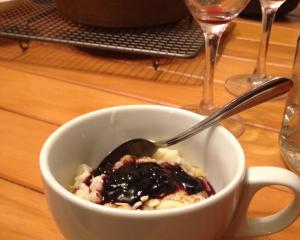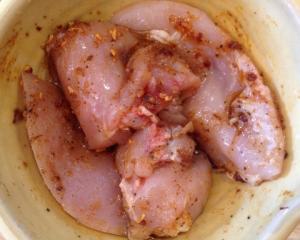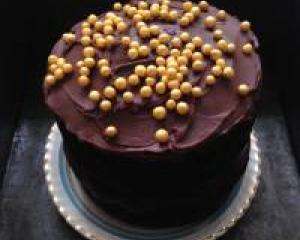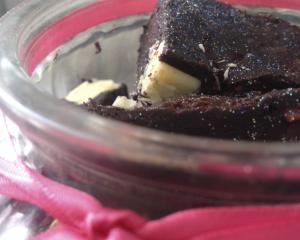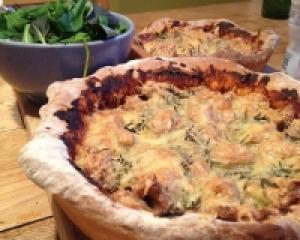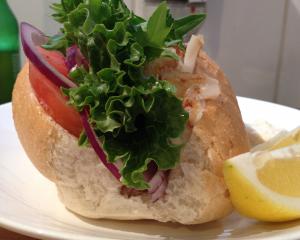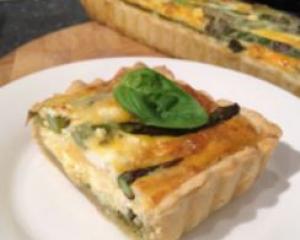
So whether you are a vego, a vegan or this week just happens to be pay-the-internet-bill week, this is just the thing for you!
The yellow split peas I am using here contain 25g of protein per 100g, 25g of dietary fibre per 100g and are also a fantastic source of all our favourite B group vitamins. (Thanks, United States Department of Agriculture!). So basically I feel that lentils are winning at life.
Dahl recipes are pretty simple - all you need are lentils, water and a handful of spices. You can increase, decrease or even add spices depending on your personal preference.
I needed yellow split peas for this particular dahl, but wasn't able to find them at New World so I tried the Indian specialty store (JS Indian Food Market) on St Andrew St.
There I was able to get almost a kilogram of peas for only $3.10. Win! It was also here I was finally able to get my hands on some dried curry leaves (which New World didn't have either). They were only $2.99 for a large bag. I love it when you go into shops and they have everything you need.
Indian stores are also a great place to find bulk spices at really good prices. I managed to find a nice big bag of fenugreek seeds for only $1.99.
This recipe requires a few lesser known spices such as black mustard seeds, those curry leaves I mentioned above as well as some cardamom pods. Depending on where you buy them it might set you back around $10, but when you think about how much use you can get from them, it's well worth it. The spice collection in our pantry just keeps growing and growing.
When you buy your split peas they will be in dried form. To make them edible all you need to do is rinse them in water then add them to a large saucepan along with just over triple the volume of water (just like cooking rice!) and leave them to cook for around half an hour, remembering to stir every so often so that they don't burn on the bottom of the pan.
Making naan bread is super-easy.
OK, so I had a little help from the dough hook of my cake mixer, but a good pair of strong forearms should do the trick just fine. The recipe I used for the naan said to let the dough rise for three to four hours. Personally, I think one hour should do the trick. Just make sure you keep it in a really warm place, such as the hot-water cupboard or in a bowl in a sink full of really warm water.
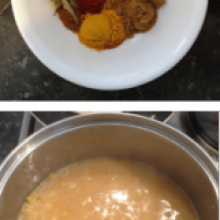
Yellow split pea dahl with naan bread
Ingredients
2 cups of yellow split peas
6½ cups hot water
2 tsp of salt
2 tsp ground turmeric
2 tsp ground cumin
1 tsp paprika
½ tsp ground cloves
1½ tsp black mustard seeds
1½ tsp whole cumin seeds
8 dried curry leaves
1 teaspoon ground chilli
4 whole cardamom pods, crushed
2 onions, diced
a splash of vegetable oil
another few splashes of oil to finish
Method
Rinse the split peas in water then add them to a large pot along with the six and a-half cups of water. Leave to simmer for half an hour until the peas soften and are cooked. After 20 minutes of cooking, add the salt.
In a small frying pan, sauté the onions in the oil until translucent. Then add the turmeric, cumin, paprika, cloves, mustard seeds, cumin seeds, curry leaves, chilli and cardamom pods and toast on a low heat for a couple of minutes. This helps to release the flavour.
Add this mixture to the peas then simmer together for another 15 minutes or so. Add salt to taste. Stir in the extra oil to give it a nice gloss.
You can serve this with rice or the naan bread (recipe below).
Naan bread
Ingredients
2 cups plain flour
1 tsp active dry yeast
1 tsp sugar
1 tsp salt
¾ cup warm water
pinch of baking soda
3 Tbsp unsweetened yoghurt
2 Tbsp vegetable oil
Method
Activate the yeast by placing it with the warm water and sugar in a small bowl and leave it for 10 minutes until it has become frothy.
In a large bowl, mix together the flour, salt and baking soda. Add the oil and yoghurt and mix until a fine, dry crumb forms.
Once the yeast has turned the water frothy, add this to the flour mixture. Bring the dough together into a ball. Knead the dough for five minutes until it is smooth.
Lightly grease a bowl with oil, place the dough in the bowl, cover with cling film and leave to rise for one to four hours.
Since we are lacking in the tandoor department at our flat, the oven will have to do. Preheat it to 220degC (bake). You also need to place a baking tray in the oven to preheat.
Knead the dough a second time to knock out all the air.
Split the dough into eight parts then roll each portion into a 15cm-diameter oval shape.
Line the baking tray with baking paper. Before putting the naan on the tray, wet your hands slightly and flip the naan between them. Bake as many as your oven tray will fit, as long as there is a couple of centimetres between each naan. Brush lightly with cooking oil, then bake in the oven for five or so minutes until each naan has puffed up.
Enjoy the protein and fibre-packed powers of dahl!!
• Interested in baking? Visit Sophie's blog, http://sophielikescake.blogspot.co.nz


